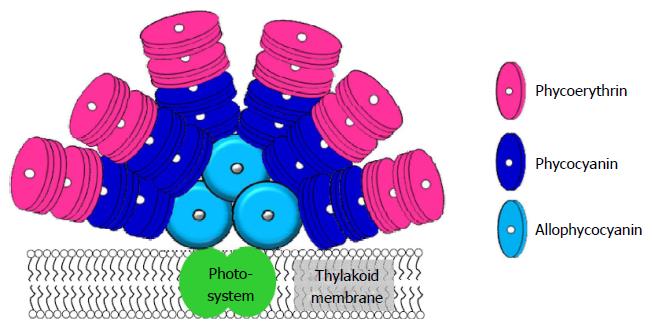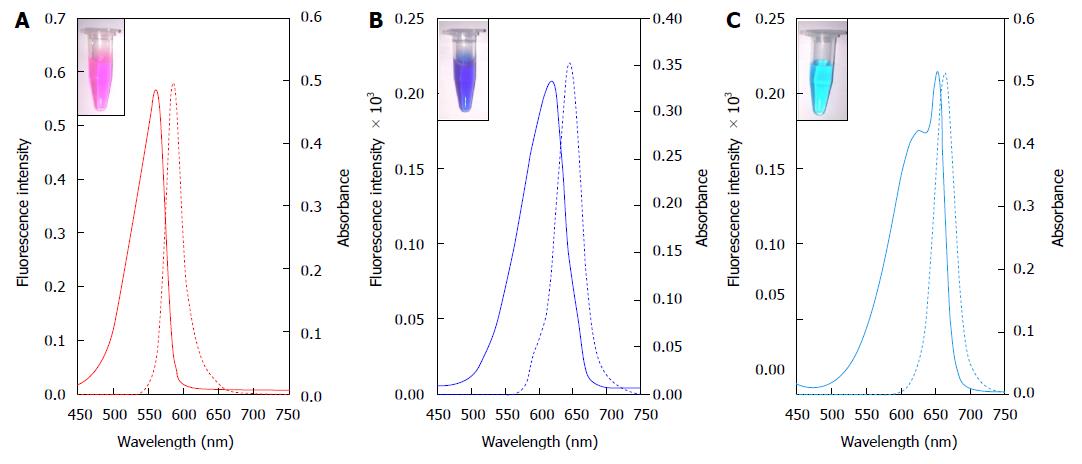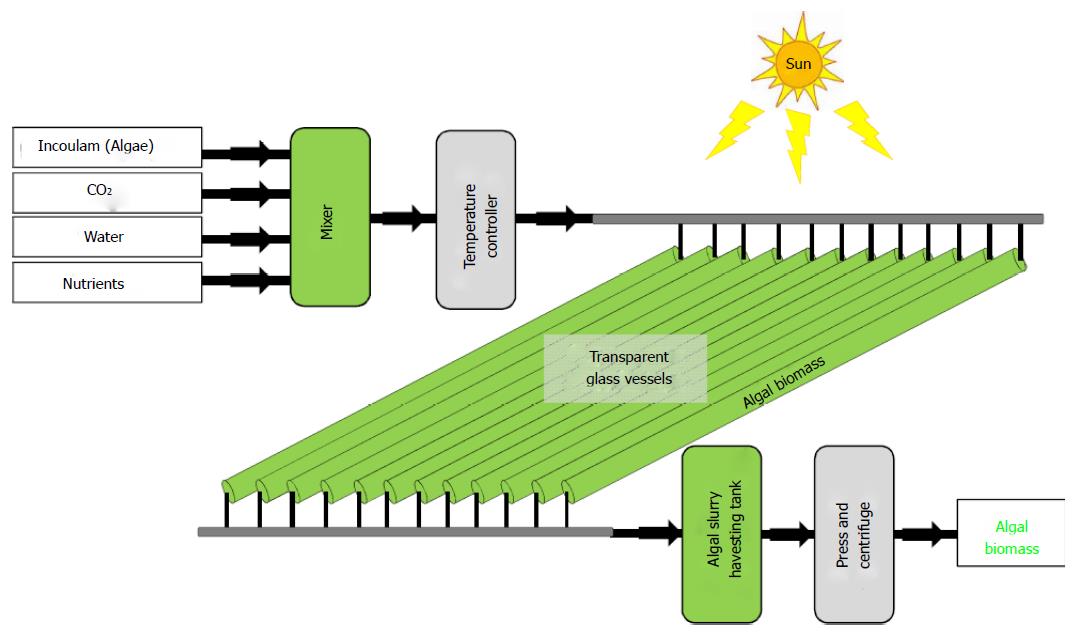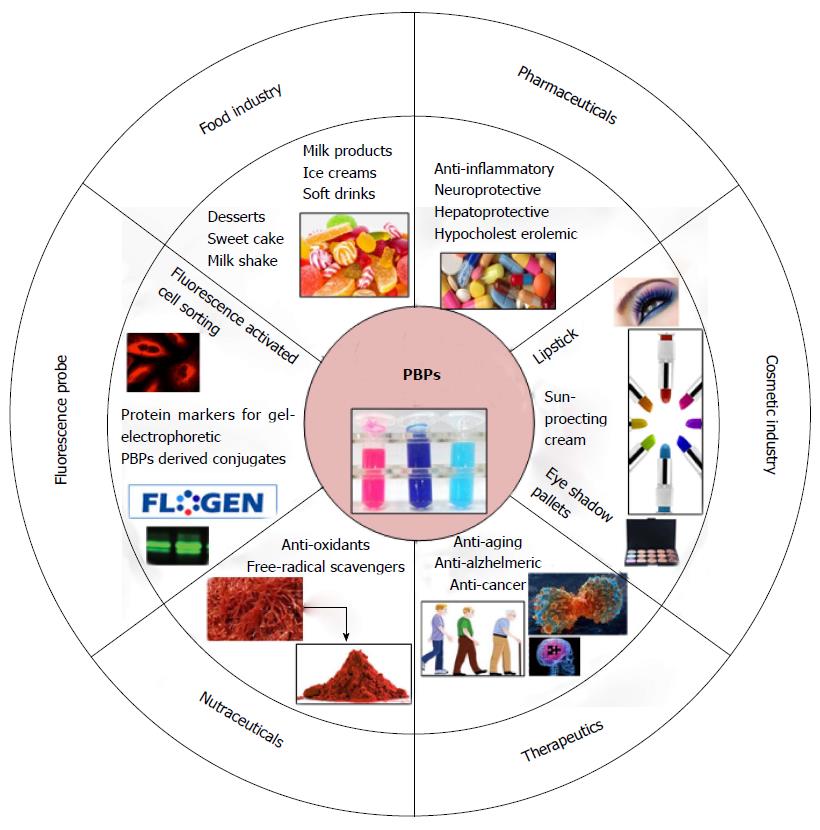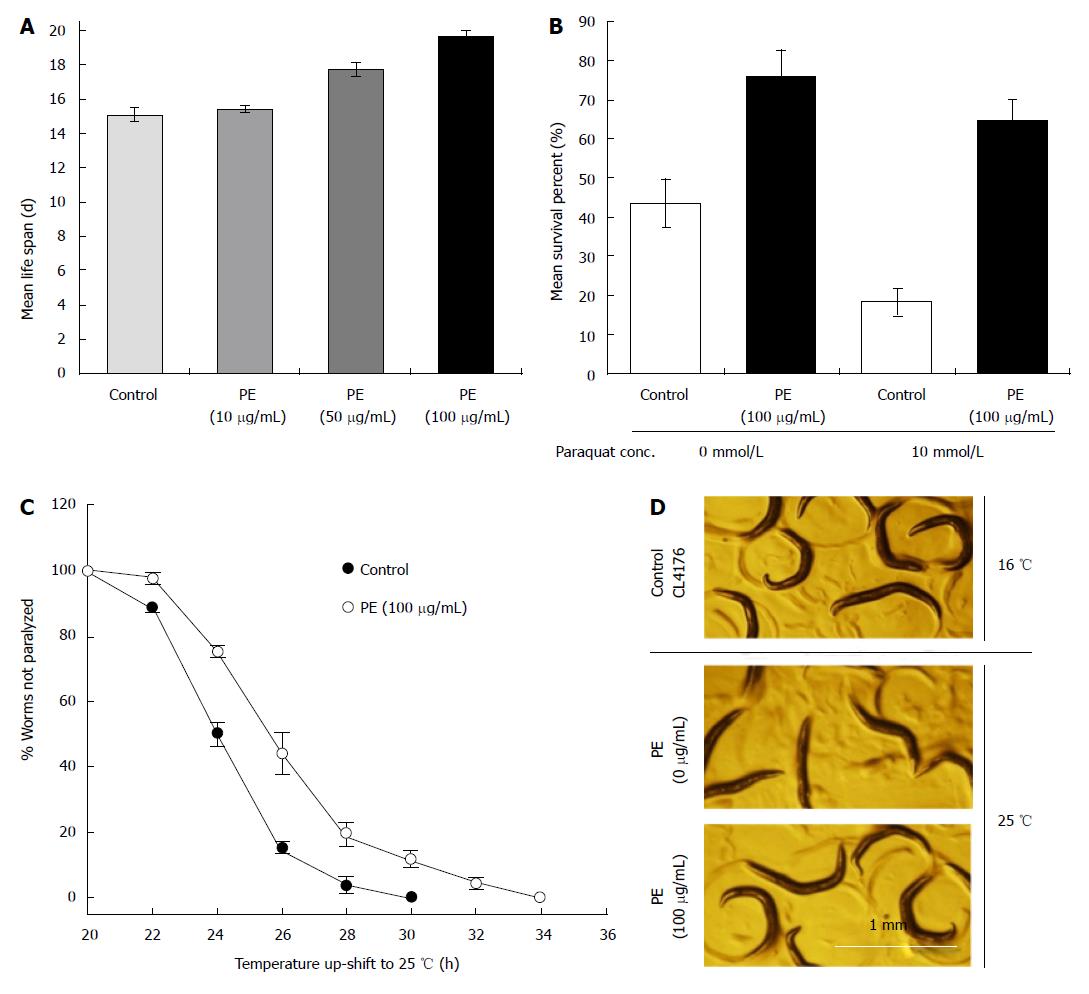Copyright
©The Author(s) 2016.
World J Biol Chem. Feb 26, 2016; 7(1): 100-109
Published online Feb 26, 2016. doi: 10.4331/wjbc.v7.i1.100
Published online Feb 26, 2016. doi: 10.4331/wjbc.v7.i1.100
Figure 1 Schematic diagram of phycobilisome situated on the thylakoid membrane.
Figure 2 The phycobiliptotein is mainly made up of hexameric and trimeric disks of phycobiliptoteins.
Schematic diagram and ribbon model of the structure of A: Phycoerythrin-hexamer; B: Phycocyanin-hexamer; C: Allophycocyanin-trimer. The apoprotein and chromophores are shown by ribbon and ball-stick model, respectively. PBPs: Phycobiliptoteins; PE: Phycoerythrin; PC: Phycocyanin; APC: Allophycocyanin.
Figure 3 UV-visible absorbance (solid line) and fluorescence emission (dotted line) spectra, and appearance (inset) of A: Phycoerythrin, B: Phycocyanin and C: Allophycocyanin.
Figure 4 Photo-bioreactor: The graphical representation of the structure and operation of widely used sun light based enclosed photo-bioreactor for the large-scale production of algal biomass.
Figure 5 Application of phycobiliproteins in food, cosmetics, pharmaceutical and biomedical industries.
PBPs: Phycobiliptoteins.
Figure 6 Phycoerythrin-feeding increases mean survival percentage of Caenorhabditis elegans.
A: Phycoerythrin-feeding increases the mean life span of wild type N2 C. elegans in dose-dependent manner[43]; B: Phycoerythrin-feeding increases mean survival percentage of C. elegans in under normal and oxidative (paraquat) stressed conditions[43]; C: PE-treatment moderates the heat-induced Alzheimer associated paralysis in the muscles of CL4176 C. elegans[63]; D: Representative images of CL4176 animal grown at 16 °C, at 25 °C and at 25 °C with phycoerythrin. Phycoerythrin effectively moderates the Alzheimer associated phenotype in CL4176 C. elegans[63]. PE: Phycoerythrin; C. elegans: Caenorhabditis elegans.
- Citation: Sonani RR, Rastogi RP, Patel R, Madamwar D. Recent advances in production, purification and applications of phycobiliproteins. World J Biol Chem 2016; 7(1): 100-109
- URL: https://www.wjgnet.com/1949-8454/full/v7/i1/100.htm
- DOI: https://dx.doi.org/10.4331/wjbc.v7.i1.100









